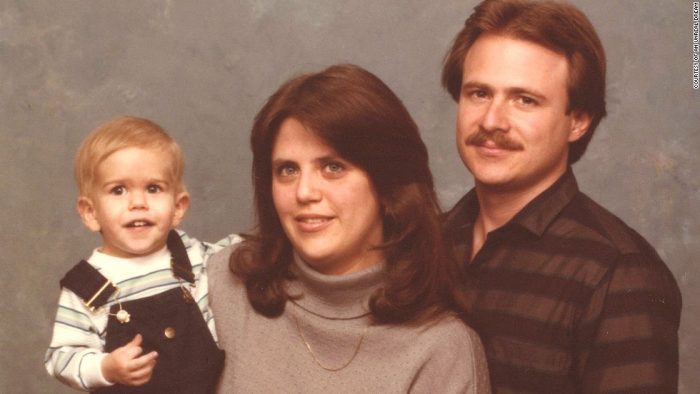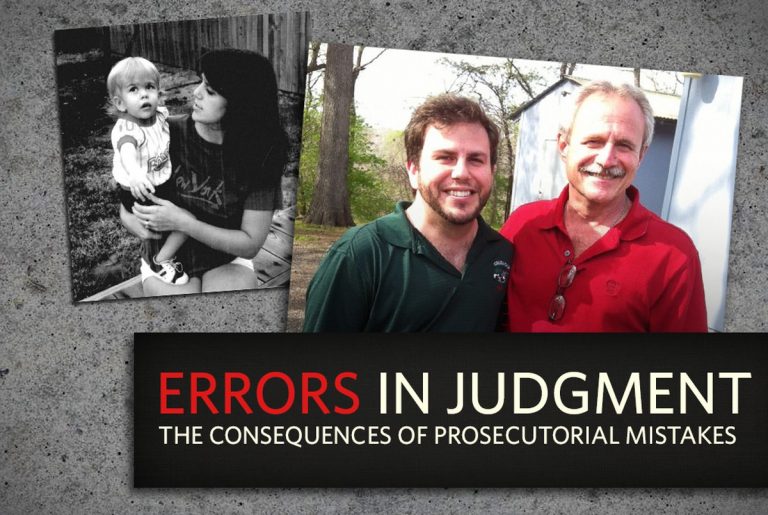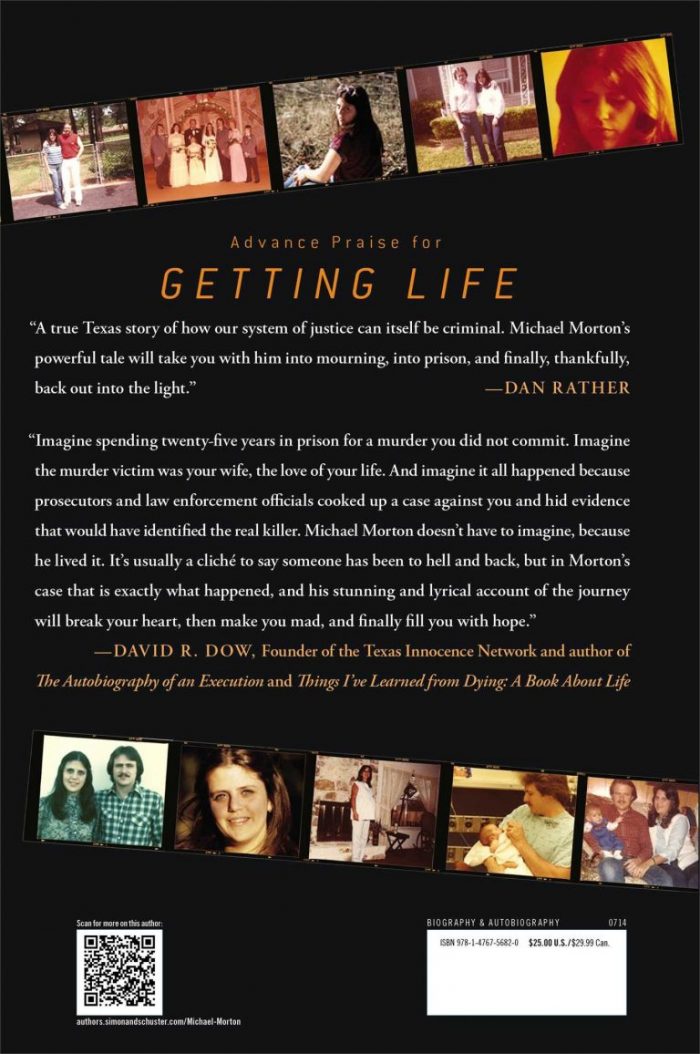Judge Sid Harle released him in less than 30 minutes from the time he set foot into the courtroom.

Page Description
Michael Morton was wrongly convicted in 1987 for his wife’s murder, serving 25 years despite no physical evidence tying him to the crime.
A System Betrayed: The Case of Michael Morton
The Michael Morton case is a stark reminder of how easily justice can be manipulated. Despite maintaining his innocence, Morton was convicted in 1987 for the murder of his wife, Christine, based on circumstantial evidence and withheld information that could have proven his innocence. Only in 2011, with the discovery of new DNA evidence, was the truth revealed, exonerating Morton and uncovering the real killer.
This webpage delves into the details of Michael Morton’s case, highlighting how a justice system designed to protect can, when corrupted, destroy lives instead. Through videos and critical analysis, we explore the profound lessons this case teaches us about the vulnerabilities of justice and the urgent need for reform.
Let us reflect on how such injustices can occur and what can be done to prevent them in the future. Michael Morton’s story is not just his; it’s a cautionary tale for all of us.
Bedrogen Door Het Justitie Systeem: De Zaak Michael Morton
Stel je voor dat je bijna 25 jaar van je leven verliest voor een misdaad die je niet hebt gepleegd. Dit is het verhaal van Michael Morton, een man die het slachtoffer werd van een diep gebrekkig rechtssysteem. Zijn zaak onthult de verwoestende gevolgen van wangedrag door openbare aanklagers en het misbruik van macht door degenen die rechtvaardigheid zouden moeten handhaven.
De zaak van Michael Morton is een schrijnend voorbeeld van hoe rechtvaardigheid gemakkelijk kan worden gemanipuleerd. Ondanks dat hij zijn onschuld bleef volhouden, werd Morton in 1987 veroordeeld voor de moord op zijn vrouw Christine, op basis van indirect bewijs en achtergehouden informatie die zijn onschuld had kunnen bewijzen. Pas in 2011, met de ontdekking van nieuw DNA-bewijs, kwam de waarheid aan het licht, werd Morton vrijgesproken en de echte dader geïdentificeerd.
Deze pagina onderzoekt de details van de zaak van Michael Morton en benadrukt hoe een rechtssysteem dat bedoeld is om te beschermen, juist levens kan verwoesten wanneer het wordt gecorrumpeerd. Door middel van video’s en kritische analyses verkennen we de diepgaande lessen die deze zaak ons leert over de kwetsbaarheden van rechtvaardigheid en de dringende noodzaak tot hervormingen.
Laten we stilstaan bij hoe dergelijke onrechtvaardigheden kunnen plaatsvinden en wat we kunnen doen om ze in de toekomst te voorkomen. Het verhaal van Michael Morton is niet alleen zijn verhaal; het is een waarschuwing voor ons allemaal.
Imagine what happened to Michael Morton
happened because procecutors and law enforcement officials
crooked up a case against him and hid evidence that would have identified the real killer.
The case of Michael Morton is an illustration
of improper and illegitimate use of justice
as explained on the first webpage ‘Preface’.
It is something that should not be possible within the justice system.
One cannot imagine, someone belongs to the entities of justice and exactly he manipulates a case in order to imprison a completely innocent Michael Morton for 25 years of his life.
Justice has the property of making reality unrecognisable.
The perversion of Justice in the Micheal Morton Case
They are sticking points, the bottlenecks, the contrains of a justice system.
A small thing is enough to disrupt justice and make it pointless and destructive.
Men kan zich niet voorstellen, dat iemand tot de entiteiten van justitie behoort en precies hij een zaak manipuleert om een volkomen onschuldige Michael Morton voor 25 jaar van zijn leven op te sluiten.
Justitie heeft de eigenschap de werkelijkheid onherkenbaar te maken.
‘The perversion of Justice’ in de Micheal Morton
Het zijn de valkuilen, de knelpunten, de obstakels van het rechtssysteem.
Michael Morton was wrongly imprisoned for nearly 25 years in Texas for the murder of his wife, Christine Morton. The key points of his case are:
- Michael Morton was convicted in 1987 of murdering his wife, despite there being no physical evidence tying him to the crime.
- The prosecution relied heavily on circumstantial evidence and the testimony of a neighbour who claimed to have seen a man resembling Morton near the crime scene.
- Morton maintained his innocence throughout the trial and subsequent appeals.
- In 2011, new DNA evidence was discovered that conclusively proved Morton’s innocence and implicated another man who had been previously convicted of a similar crime.
- It was later revealed that the prosecutor in Morton’s case had withheld key exculpatory evidence from the defence, including statements from the victim’s mother implicating a different suspect, and police reports indicating that a suspicious man had been seen in the neighbourhood on the day of the murder.
- Morton was exonerated in 2011 and released from prison after nearly 25 years.
- The case sparked an investigation into prosecutorial misconduct and ultimately led to the disbarment and criminal prosecution of the prosecutor, Ken Anderson, who had withheld evidence and deliberately misled the court.
- The case also helped to bring attention to broader problems with the criminal justice system, including the prevalence of wrongful convictions and the need for reforms to ensure fair trials and prevent prosecutorial misconduct.
1 Life after prison, Morton meets grandchild
27 jun. 2013
Who is Michael Morton?
“He was just an ordinary, law-abiding citizen, who got clobbered for no good reason,” says 60 Minutes producer Andy Court, who co-produced this week’s story about Morton’s wrongful murder conviction and 25 years in prison.
During the reporting process, Court says, “there were often times I thought of the Bible. I thought of the story of Job– someone who just endures suffering after suffering, and it’s not clear why.”
In 1987, Morton was convicted of beating his wife, Christine, to death. Twenty-five painful years later, he finally cleared his name through DNA evidence, walked out of prison, and began to pick up the pieces of his life.
For the 60 Minutes team who came to know Morton, one of the most emotional parts of this tragic tale was Morton’s estrangement from his son, who was just three at the time of the murder.
“The relationship between Michael Morton and his son, I think, transfixed all of us,” Court told Overtime. “The fact that this little boy saw his mother murdered…and then at the very point when the father needed the son and the son needed the father, they were ripped apart. The son was raised by relatives, no doubt thinking that his father had killed his mother. You can only imagine what it was like for the son to find out, ‘Oh my God, what people told me was wrong. Dad didn’t kill mom. Dad was an innocent man.'”
In this week’s Overtime feature, Court and his team tell us more about Morton, his relationship with his son, and his granddaughter, Christine.
Producer’s update: Since this story aired on 60 Minutes, Michael Morton got married to a woman he met through his church. Last month, Morton watched as legislation he had lobbied for was signed by Texas Governor Rick Perry. The new law requires prosecutors to disclose investigative information to the defense. It’s called “The Michael Morton Act.”
2 Michael Morton is a free man – 5 pm News
3 Attorney: Morton freedom is a miracle
4 An Unreal Dream
5 Morton memoir details injustice, new life
6 HCCLA Reasonable Doubt – John Raley (Michael Morton)
10 apr. 2015


Michael Morton and his mother, Patricia Morton, in October after a judge announced him free on bond after nearly 25 years in prison for a wrongful conviction.

7 Little Girl Gives Away Mom’s Car
15 jun. 2020